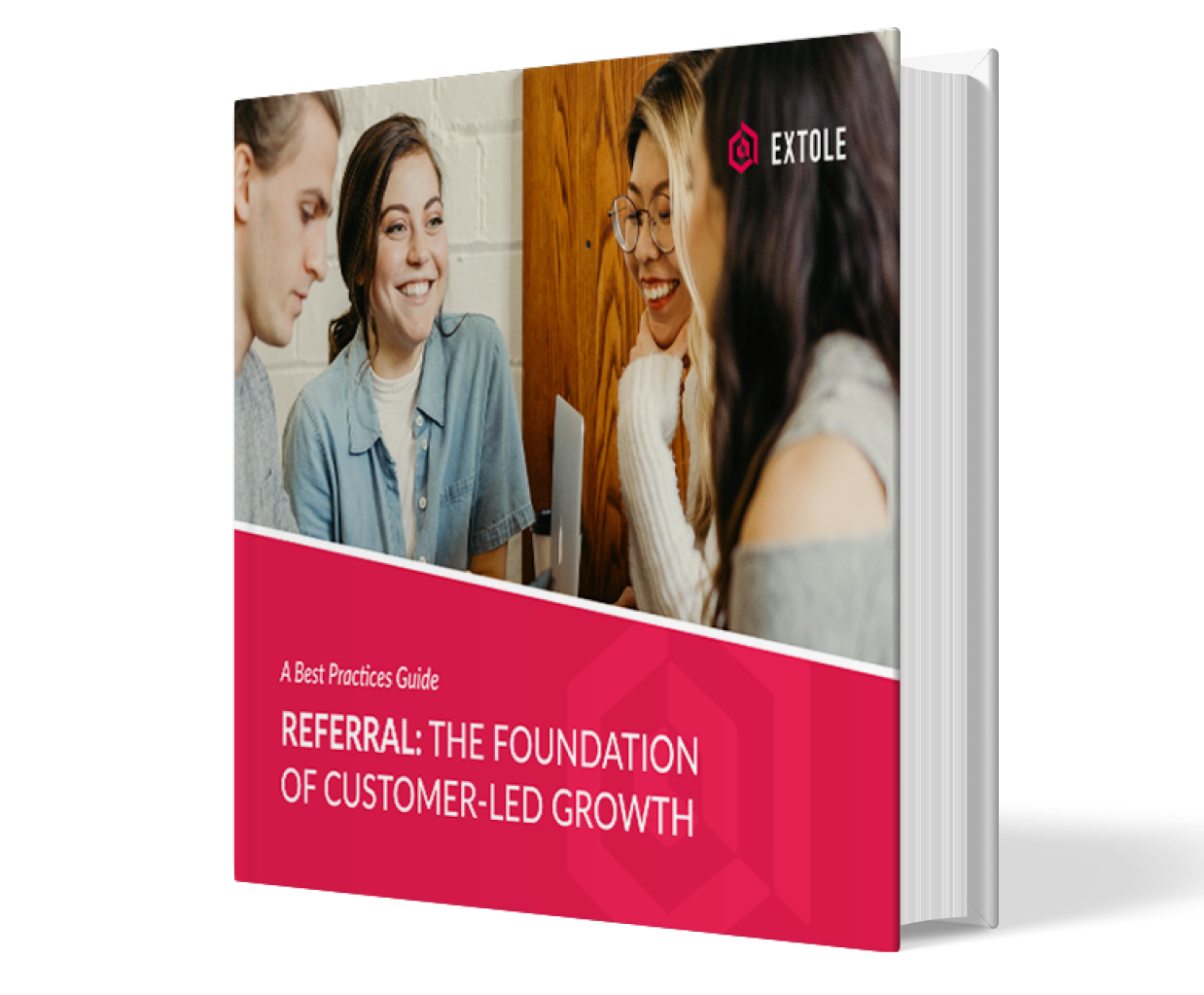Have you ever noticed how many incentive variations there are for referral programs? Some offer cash back like PayPal, credits like Airbnb, discounts like Uber, and more.
Many of these referral programs are extremely successful, which begs the question, “How do marketers know which reward will work?”
When launching a new program, the issue is choosing a referral program incentive that stands out and gets advocates and their referred friends to take action. The incentive has to be relevant enough to motivate people to buy something, sign up, or complete a process.
We know that successful referral program incentives have two things in common:
- They cater to the needs of customers.
- They depend on the stage the product and business are in.
We’re taking a closer look at how these two variables work together to uncover exactly how managers figure out what type of incentives to offer.
Give your customers what they need, not what they want
Referrals are one of the most effective ways to boost customer acquisition. That’s why so much research has gone into figuring out what customers want out of referral programs to make the programs as successful as possible.
A lot of research has been done to figure out what types of incentives advocates prefer. One study done by Nielsen’s Harris Poll found the following:
- An incentive gets advocates to share more than when there isn’t one. The study found that 88% of people would like to receive some kind of incentive. The incentive can be an opportunity for social recognition, access to a loyalty program, money, or a free product or service.
- Millennials want incentives as motivation to share. Ninety-five percent of millennials say they’d share if there’s an incentive.
- Advocates want cash. The study found that overwhelmingly 77% of people say they prefer to receive cash compared to other types of incentives.
It would seem that in order to get advocates to share and spread awareness of your brand, the best option is to give them cash.
But just because advocates – and referred customers – want cash, that doesn’t mean that’s what you should give them.
Instead, the incentive should be appealing to advocates and fit your business model. You’re not in the business of giving away money. You’re in business to spread brand awareness, grow your customer base, and retain as many of these customers as possible.
While cash is a great motivator, it doesn’t add value to your product or service because there’s no connection between the incentive and your business. For example, giving advocates $50 per referral doesn’t guarantee that they’ll come back and use your product. They will only refer as a way to make a quick buck.
Let’s be clear, though. Sometimes cash can work as an incentive, but the key is to tie it back to your product. Joany, a healthcare concierge service, gives customers $25 to answer a survey. If customers share a referral link afterward, they get another $25 when their referral completes a survey.
Joany gets valuable data that helps make its product better, and advocates and referred customers put in a little quality work to get their cash incentive. It’s a win-win situation.
Choose single or dual incentives based on your product’s stage
Before you decide on the incentive that works, you have to decide on how you’ll deliver the incentive. There are two ways to deliver incentives:
- Dual-sided incentives. The advocate and referred friend both get something. They follow the “give this, get that” format.
- Single-sided incentives. Either the advocate or the referred customer gets the reward but not both.
Dual-sided referral programs are the most successful format because they cater to advocates’ need for social recognition. Remember, the vast majority of people want an incentive and to know “what’s in it for them” when they refer someone. Advocates want to be seen as generous, and their referred customers also get an incentive to act.
Dual-sided incentives work for larger, well-established brands. Large brands aren’t constrained by tight budgets and can afford to reward both advocates and referred customers. Keep in mind that the incentive doesn’t have to be monetary. Like Evernote, you can offer referred customers premium access to your product and give advocates points to use towards getting more access within your product.
Single-sided incentives work well for smaller brands that are just starting out. These brands want to build a strong customer following and brand awareness but can’t afford to reward advocates and referred customers. Oftentimes, the reward is geared towards the advocate as a way to motivate them to share. In return, brands focus on emphasizing the product’s value and benefits to referred customers to get them to convert.
For example, Zulily gives customers a $20 credit when they refer friends. The referred customers don’t get an incentive but do get access to a wide range of affordable fashion options.
Whichever format you choose, it’s important to note that the incentive has to be unique to you and something relevant to advocates and referred friends.

Referral Marketing – The Best Practices You Need to Know
Written by veteran referral marketers, this guide will help you optimize your referral marketing program and supercharge growth.
Get the GuideThe referral program incentive you choose depends on your product
To figure out which incentive format works best for you, look to your product for answers. The type of product you have – whether it’s new or it’s been around for a while – will decide what type of incentive works. There is no standard here. Whichever incentive you choose, it should get advocates and referred customers to use your product repeatedly.
This way you kind of train customers to use your product regularly, and they get a reward for doing so.
Let’s look at five types of incentives and how your product dictates which one to use.
Discount Incentives
If you’ve launched a new product or want to revive one that’s lagging, offer a discount incentive. Discounts are ideal in this situation because they require referred customers to spend a minimum first to get the discount. When this happens, advocates get a discount on their next purchase.
Wish, an eCommerce marketplace, gives advocates and their referred friends the same percentage discount. With this offer, advocates and referrals get up to 50% off. So the more they spend, the more they get.
Cashback Incentives
If you have a product with a long buying cycle – like cars or houses where purchases are infrequent – you need an incentive that’s immediate and meaningful. Cashback referrals work for these types of products. Because these customers don’t buy your product often, you need a way to get them to refer you and gradually build your customer base.
Frequently, realtors offer customers cashback, like $500, for a referral. Car dealerships will offer thousands of dollars off a car for a referral. You don’t have to break the bank, just offer something that is impactful to your customers and sustainable for you.
Credit Incentives
One way to guarantee that referred customers use your product or buy something is to tie in the incentive. For example, in order to get $50 towards their first purchase, referred customers have to buy a minimum amount first. When they do, advocates also receive their incentive. With this incentive model, advocates will share their referral and make sure that referred customers are likely to buy.
Airbnb gives advocates a $20 credit and referred friends $40. To get the credit though, referred friends have to book a trip that’s over $75. This way Airbnb ensures that referrals follow through so that they and the customer get something in return for booking.
Free Product Incentives
If you have a well-known product, then you don’t have to offer a monetary incentive. The weight your brand carries, and the potential for advocates to get their hands on something for free, is enough for them to share a referral. This approach helps to promote your business, but it’s expensive. Be sure that the number of advocates sharing and referred customers buying is enough to cover the cost of this incentive.
ThreadBeast is a clothing subscription service that gives referred customers $50 worth of merchandise in their first package. Advocates get a free package in exchange. What’s great about this incentive is that there’s no limit to the number of referrals advocates can send. So if an advocate sends a referral every month for a year and their referred customers buy something, the advocate keeps getting free stuff.
Gift Card Incentives
There are lots of benefits to using gift cards to reward customers. For starters, gift cards are more like “free cash” and less like discounts because customers can buy whatever they want without spending their own money. With discounts, customers save, but they still have to spend their own money. Plus, customers tend to spend more when they buy with a gift card.
Other benefits include:
- They’re more secure. Gift cards only have value once they’re activated.
- They can be contained. Unlike discount codes – especially the multi-use ones – that can be shared beyond the initial advocate group, customers have to have a gift card in hand to get the reward.
- They can be used in physical stores. This is a valuable option for customers who prefer to shop in-stores vs. online.
Gift cards offer a lower cost option for smaller brands that can’t afford the other options on this list. For example, smaller brands that want to add a sense of urgency can offer 100 gift cards to start. As your product and customer base grow, offer more gift cards and increase the denomination – like $20 or $50.
You can even get creative with the type of gift card you offer as long as it’s for something relevant to your customers. For example, if you have a tech product, then offer a gift card to Best Buy since your audience is interested in tech devices. You can even choose to use Visa gift cards to give advocates more flexibility on where to use the card.
DocuSign is an electronic signing app that helps businesses manage contracts and other signed documents. Their referral program gives referred customers a 10% discount off their first purchase. Advocates get a $20 Amazon gift card.
Put it all together
It’ll take some experimentation to find the right combination of incentive and offer type before you find a program that generates lots of new customers. Also, experiment with dual- and single-sided rewards to see what leads to the highest referral rate and customer acquisition.
Don’t worry about what your competitors are doing. Find what works for you and your customers and focus on that. Being creative and focusing on what your customers need and respond to will put you on the path to referral program success in no time.









